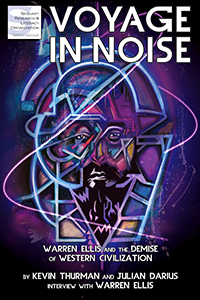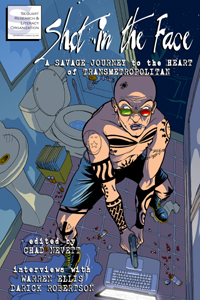2005 is at least significant on two fronts; it is the centennial of The Day the Rules Changed, of Albert Einstein’s Specific Theory of Relativity, also, it is the year in which Transformers: the Movie plays out. High culture and low, ‘woven together like the strands of a rope’, as Koike so elegantly suggests in Wolf + Child.
How are we, though, able to hold together these two almost conflicting anniversaries? One bodes the complete restructuring of the way in which we engage our cosmos, while the other subjects a form of entertainment marketed primarily for a young audience to the discourses of 80s action movies.
The implications of Einstein’s Specific are enormous, and the effects of Transformers: the Movie on the other hand, small and petty. Einstein’s Specific is responsible for our being able to understand the very end of the universe, and the very beginning. It corrects the inaccuracies of Isaac Newton’s Theory of Gravitation and allows us to accurately predict what happens to stars, the universe’s production plants (designed to manufacture the heavy elements needed for complex matter), at the very end of their evolutionary cycles. Gravitational collapse, occluded stars and worm-holes. Einstein’s Specific begins to show us how timespace, far from being the stable background so long believed to be, is actually one quantity and subject to relativistic affects based on an interaction with gravity. The Day the Rules Changed, no exaggeration can be sufficient to communicate its full impact.
Transformers on the other hand, for all the appeal of a schoolboy epic, is nothing more than the chronicle of a civil war spiraled far out of control, fought on two worlds, detailed in a line of toys, a television show, and finally an animated feature film named out of perhaps a sense of utility, Transformers: the Movie.
Robots in disguise. At the time I remember how seductive it was to give in to the view that the warring Autobots (the forces of good) and Decepticons (surprisingly the forces of evil) were simply machines. The true and hidden gem of Transformers however, was that they were anything but. They were alien in the most complete sense of the term. Hidden from sight, and fighting a civil war that necessarily (although I do not recall the rationale for this ever being provided) also remained hidden from sight, the Transformers learned perhaps the ultimate camouflage; to appear as the everyday technologies of a thriving industrialized world. Something should be said for the casting of the heroic Autobots as automobiles in an America just coming out of the energy-crisis of 1979. But this remains a point outside of the scope of this essay.
What the Transformers provided in the 1980s pre-adolescent landscape of animated television fiction, was a unique narrative of the late Cold War period. With shows like Masters of the Universe audiences were exposed to pan-galactic titans locked into eternal and unending battles, or with Thundercats the Paleolithic earth itself was the site of an epic confrontation between mammalian and reptilian aliens. While other 80s TV shows provided neo-imperialist or counter-imperialist narratives for the children of the generation looking back on their own childhood during the first years of the Cold War, Transformers, the animated show, provided a unique Cold War summation narrative. It took what will no doubt be historically posited as the bold move to discuss the late-twentieth century world as we knew it then as equally subject to ideological wars as South-East Asia and Eastern Europe were to America’s involvement.
In Blackstar we saw a neo-colonialist narrative of settlement and merchant finance play out. In Thundercats we saw aliens with alien concerns merely appropriate the Eden-like earth as site for their own ideological purposes, a fitting narrative for the various dirty wars fought around South America. But with Transformers we saw the clash of alien ideologies that incorporated itself into our everyday lives, by warriors disguised to move freely in our own world, disguised as our very technologies.
Viewed of course at a greater critical distance, with a wider perspective, Transformers: the Movie and Einstein’s Specific don’t seem so very different at all. They both appear as well-crafted products honed and tempered to the political machineries of their age. For Einstein, the burgeoning economies of the colonies and dominions and the newly set-in twentieth century meant a renegotiation of the very role of the colonies. It only makes sense then, that a structuralist description of the universe would begin to develop.
Transformers: the Movie, as is to be expected, says more about the 1980s than it does about the world it imagines twenty years hence. The fight-scenes are massive and sprawling, and not at all well-sequenced. Blows seem to land at random, while the cinematography turns towards valorizing heroes or villains at that final moment just before a shot is taken. The blast sears through metal, reminding us of the frailty of our own flesh.
Like so many movies from the 80s, like so many action-oriented feature films, Transformers: the Movie relies more and more on a sense of experience than a kind of linear plot-line. The well-paced visually blistering elegance of a creature like Michael Bay’s Bad Boys is traded out for a hard-hitting primarily emotional experience of the ilk found in episodes of the A-Team, Airwolf or even Miami Vice. With the Movie, Transformers reemphasizes that almost sacred space where almost in the strictest of senses, the cinema itself is animated. Which is to say, the cinema itself is lent momentum by its audience, animated by their imaginations rather than by the design of narrative or directorial execution.
This debate, around the use of so-called invisible editing, is one that dates back to the earliest days of cinema, to a debate between Russian filmmakers Sergei Eisenstein and Dziga Vertov, a debate already wearing thin in 1923 when the filmmakers’ respective manifestos were published. Eisenstein, who could perhaps be credited as the father of modern Hollywood cinema, in that he was to propose, to implement and perhaps even perfect its techniques, was of the opinion that editing should remain unseen, that audiences should be mesmerized into belief that the screen is nothing more than a roving window upon other worlds. Vertov on the other hand, believed cinema to be nothing more than a means of education, and, in keeping with this, believed that the hand of the filmmaker should always be present for audiences to see.
By the 1980s of course, when Eisenstein’s thinking seems to have won a wide-scale victory over Vertov’s, Vertov makes strange, albeit tangential appearances. As might perhaps be evidenced in the artistic choices of filmmakers who rely on the primarily comics-oriented technology of having audiences animate their own fight-sequences, rather than providing a coherent directorial narrative. With the 1980s Vertov is gone, yet unforgotten, and it should come as no surprise that the 1923 debate around invisible editing which inspired the initial conflict between the disparate schools of filmic thought is one that Warren Ellis resurrects for his and Colleen Doran’s Orbiter.
It is a classic, in the same sense that Eliot suggested the Aeneid as a classic in his 1944 lecture to the Virgil Society. Or in the sense that Italo Calvino speaks of a classic in his seminal essay appearing in the Literature Machine. Or Orbiter should be a classic in that same sense. Or perhaps the work will go largely unnoticed by our own and subsequent generations, and remain as a hidden gem, found and treasured by a handful of explorers. When I speak of Orbiter as cinematic, it is in this sense, that Ellis is able to, with consummate skill, resurrect the debate between Vertov and Eisenstein.
With Orbiter, Ellis poses a series of technical problems in the representation of timespace. Ellis’s insight is to equate these problems of representation with the broader debate around the constructed or mesmerizing nature of cinema. Theoretical questions of representation are transposed into questions around the fractured nature of different media, competing.
‘We can’t allow human space exploration to become our history,’ Ellis writes in Getting Up Again, his foreword to the book, giving something of the game away, so to speak, in the process. There is perhaps no more elegant way to represent the politics of representation that necessarily cede into a wider debate around the media involved in those representations. There is perhaps no more perfect a sentence than this. How could anything, particularly exploration, be in danger of becoming history? The strange aggregation of concepts belies the central problem; human beings do not interact with reality, but a vectored representation of reality. Once these vectors begin to collide and pull too strongly into a multiplicity of directions, the representation, or to suggest again the more technical term, the theory, can no longer sustain itself. Attention is necessarily turned from the directorial narrative, to the personal experience of the content communicated.
There is perhaps no better way to attempt a manifesto than what Ellis achieves here. Not simply polemic, in that Orbiter relies on rhetorical devices to assuage and seduce readers, but a manifesto in the truest, most well-executed sense of the term, where readers are necessarily involved in the animation of those politics. Further, this masking effect of the politics of human space exploration cues into a larger debate around the constructed nature of media more generally. In Orbiter we find ‘hard-wipes’ where non-storytelling pages are scripted in to draw attention away from the narrative at key points. Kennedy Space Center and its environs are small and cramped and broken spaces. The human interactions are pre-scripted perhaps even to the point of being emotionless; Ellis simply envisions a world without the concept of heroism. Not out of a sense of lacking or unrefined skill; it requires a consummate artist to use obvious formulations to effect the necessary responses. How very necessary then, it becomes for Ellis’s audience to imagine the freedom and exhilaration of exploring space. Space itself is necessary. Like a master-tactician Ellis is able to arrange his audience, emotionally and intellectually, along a pre-decided path, communicating the very necessity of human space exploration.
‘It’s a book about glory. About going back to space. Because it’s waiting for us and it’s where we’re meant to be’, writes Ellis in his foreword. Orbiter stands as a classic in the truest sense. Perhaps the words of J M Coetzee ring most true here; ‘The classic defines itself by surviving. Therefore the interrogation of the classic, no matter how hostile, is part of the history of the classic, inevitable and even to be welcomed.’


































































